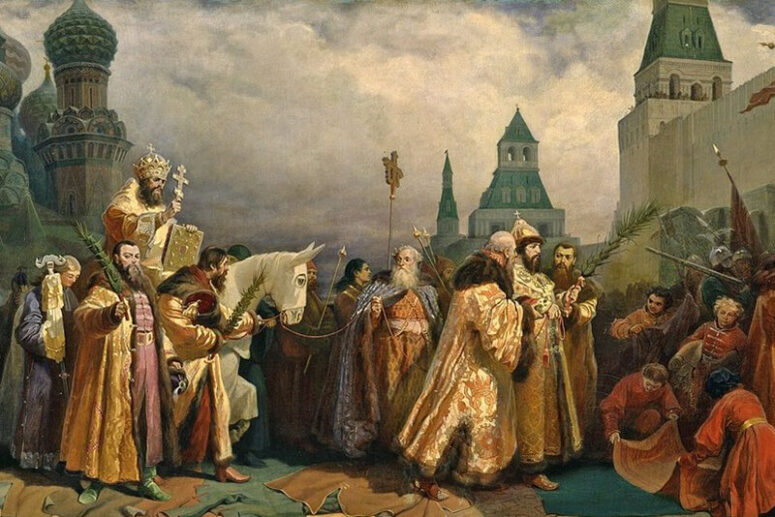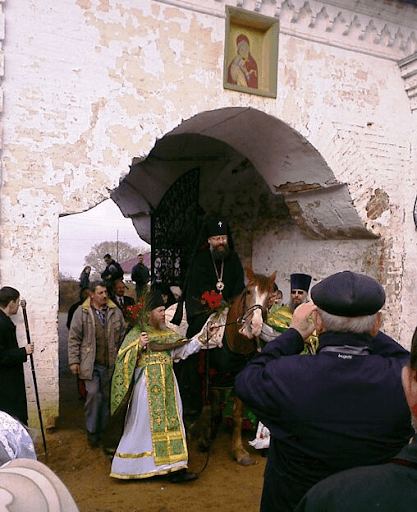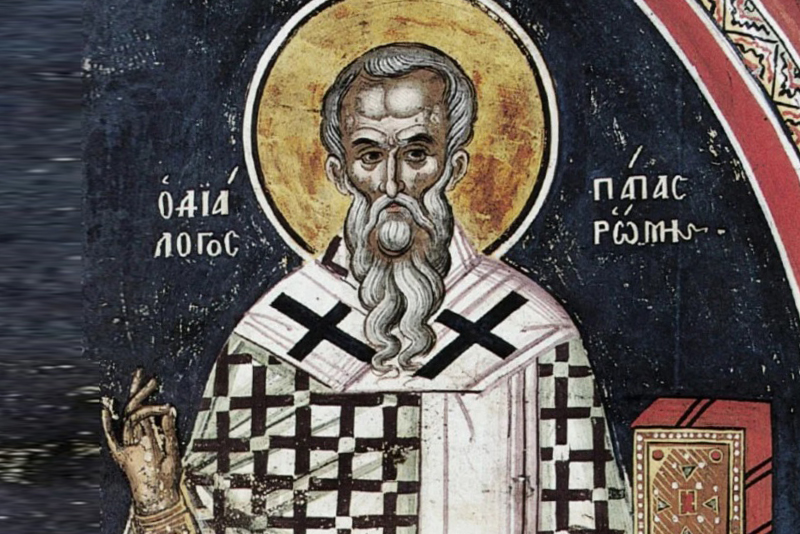
In the past, newly ordained Orthodox bishops used to ride into town on a donkey. This ritual evoked the Entry of the Lord into Jerusalem but was accompanied by other practices unrelated to the events of the Gospel. Why was the significance of this ritual, and why is it no longer practiced? Keep reading!
History of the custom and its symbolic meaning
The procession across town on a donkey was known from the 14th century, but it may date back to an earlier time. Perhaps its earliest documented description is found in the work of the venerable Simeon of Thessaloniki, a fourteenth-century church historian, titled “On the Holy Sacraments and the Mysteries of the Church.”
The Venerable Simeon mentioned two principal features of this rite. The first and most obvious was the emulation of Christ’s behavior. The second, and far less obvious, was the mystery of purification and enlightenment. In the Sacrament of the Ordination, the Lord pours His abundant grace on the ordained, adding great power to the archbishop’s prayer and blessings. So the archbishop would pray with vigor for the good of the prince, the city and the people.
The rite was not performed on bishops elevated to the rank of metropolitan without the sacrament of consecration.
The Russian Church began to practice it almost simultaneously with the Greek Church. However, its Greek version was more solemn and ceremonious. For example, the Greek bishops rarely rode a donkey, preferring to travel on a richly decorated horse.
A visit to the king
The first thing the bishop would do was to come before the king or prince who governed the city. After leaving the church, the bishop received from the archpriest the life-giving cross. With the cross in his hands, the bishop got on a donkey and went to the king’s or prince’s court. The boyars or lesser princes led the donkey under the bridle, and closing the procession were the singers and four then four candle-bearers with palm branches in their hands. Ahead of the procession were the heralds, whose main task was to clear all obstacles out of their way.
Sometimes, the procession used a horse or even a horse-driven cart instead of a donkey. In the cold Russian winters, the bishop would often ride in a sleigh.
Where the rite was performed on a patriarch, the life-giving cross was entrusted to the sacristan who carried it on a platter, like holy water. The singers, dressed in stycharia, carried the diaconal candles. There were as many as six candle bearers with palm branches.
Archpastoral prayers were read upon arrival to the king or prince. When finished, the bishop blessed the ruler with the cross and sprinkled him with holy water. A meal was at the royal court. A patriarch dined next to the ruler. After the meal, the bishop continued his journey across the city.

A round of the city
The newly consecrated bishop had to go around the city at least once, blessing with the cross the people he met. He was accompanied by the clergy, nobility and officials. He began by reading the prayer “Heavenly King” to the chanting of the hymns of the Twelve Great Feasts, and the feasts of the most beloved saints.
At the end of his walkaround, the bishop read a dedicated prayer at the city gates, blessed the people of the city and sprinkled holy water on the gates. In his prayer, he asked the Lord to shed His mercy and grace on himself, the people, the city and the ruler.
He asked the Lord to help him be a good shepherd of his flock and a worthy preacher of His word. In his prayer for the people, he prayed that God would make them the sheep of the chosen flock, open their senses and make their hearts dispositive to hear the divine word. For the city, he asked God that He might make them good sheep of His flock, and their hearts and senses attuned to His Divine word. Praying for the city, he asked God to grant His protection from all enemies. Finally, he prayed that the ruler would govern peacefully and wisely, in piety and prosperity.
Palm Sunday donkey ride
Palm Sunday was an annual event commemorating the Entry of the Lord into Jerusalem. The bishop rode a donkey or a small horse led by the ruler or the Voivode around the city.
The people greeted them with palms and sometimes palm branches were brought from the East for this procession and distributed to the people. Some shouted “Hosanna to the Son of David,” while others threw expensive clothes and fabric on the ground, emulating the events of the Gospel.
The bishop did a round of the city and blessed the people. The procession ended at the city cathedral, where the bishop celebrated liturgy.
For some unknown reason, this practice was discontinued in the late 17th century, when the archbishops’ processions were prohibited by law and the church rules to ride a donkey at ordination or on the Sunday of Vaya. No specific reason was given.
The only exception was made for the patriarch, but it did not last long, either. Perhaps the Russian Tsar Peter I, who reigned from 1682 to 1725, considered it too humiliating for the Tsar to lead a horse with the bishop on it, and refused to take part. So the custom was discontinued.
Conclusion
Although there was nothing harmful in this custom to justify its prohibition, it is unlikely that its practice will resume any time soon. Nevertheless, there have been several isolated attempts to revive it at least partially.
For example, Archbishop Kirill of Yaroslavl and Rostov led the Procession of the Cross on Palm Sunday in 2008 on horseback.

This year, the Palm Sunday procession of the cross outside the Church of Sts. Boris and Gleb in Grodno featured a live donkey – not for the bishop but for the amusement of the children who took part. Every willing child could enjoy a donkey ride.





